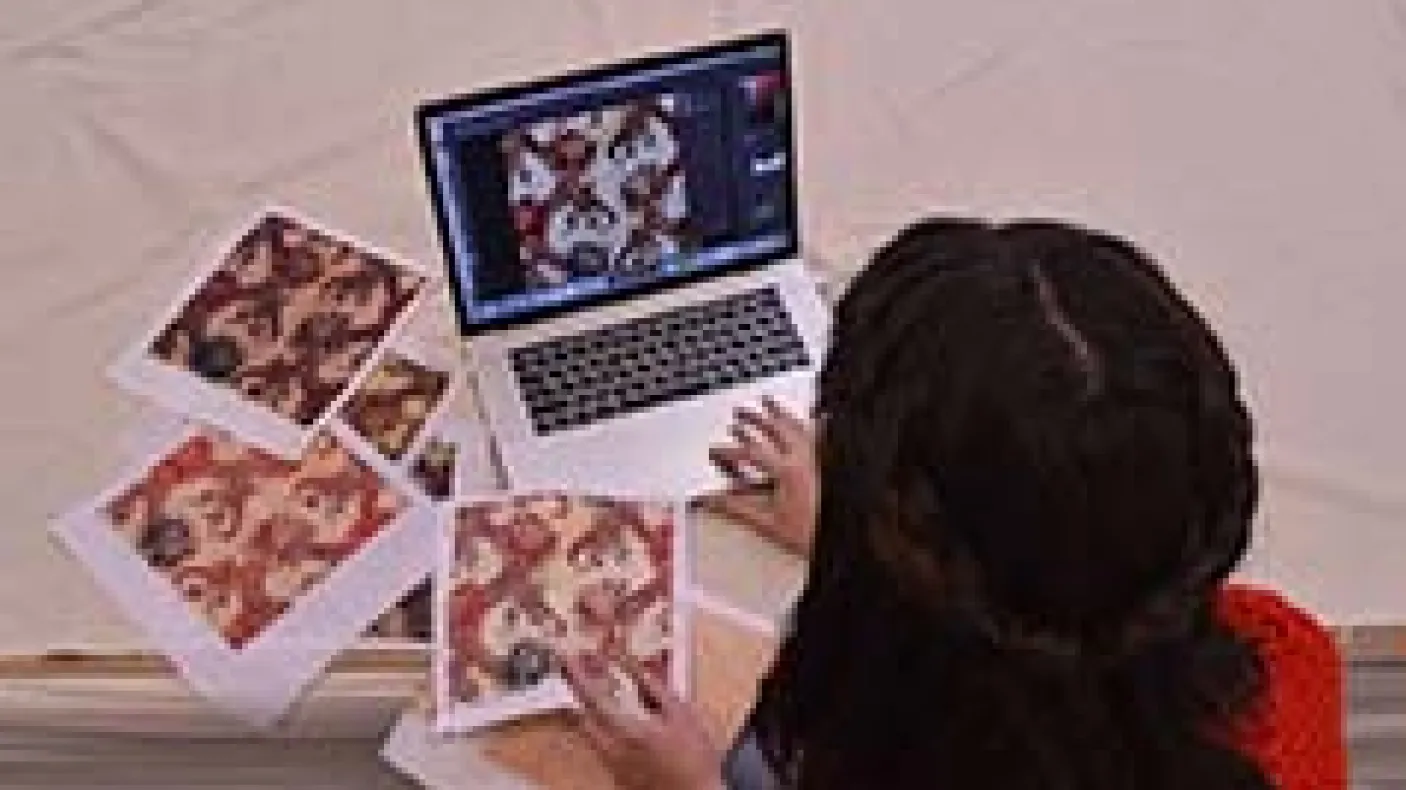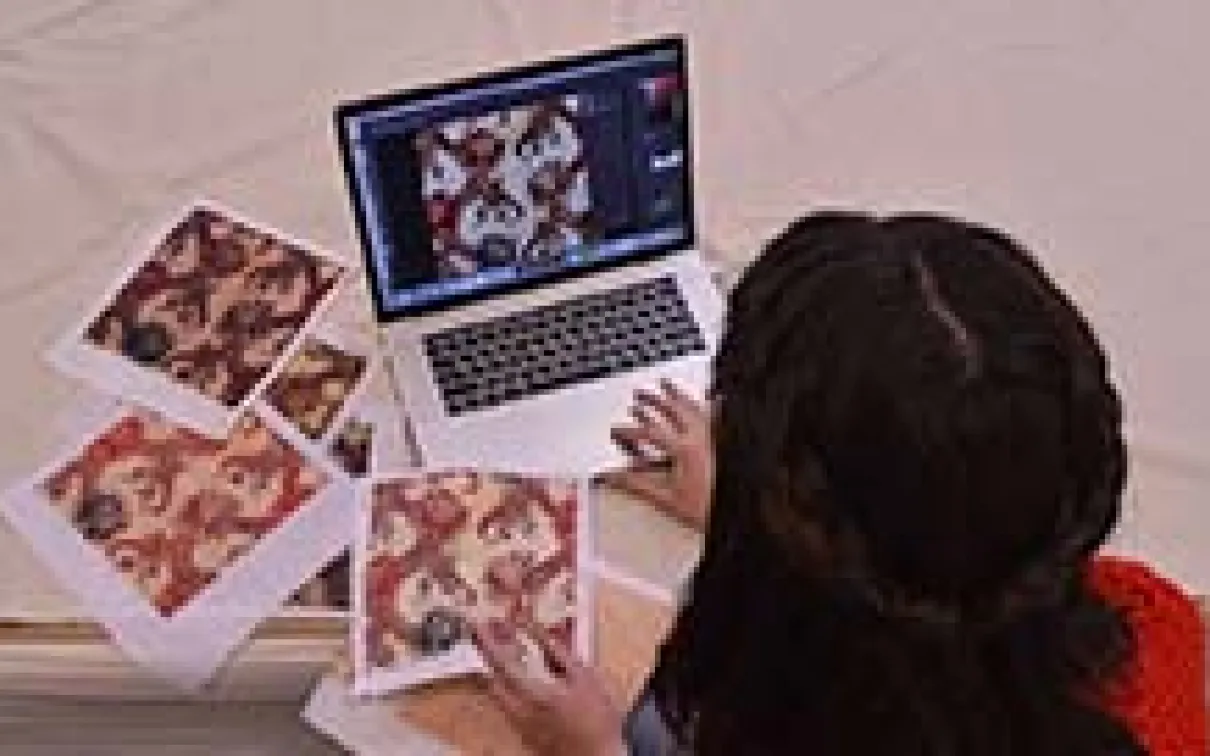An Innovative Approach to A Puzzling Problem
Published
Categories
Author
Blog Post
Conserving an Indian Chintz Cope made in the Eighteenth Century for the Armenian Church
Here in the Textile Conservation department of the ROM, Senior Textile Conservator Chris Paulocik and I have begun preparing objects for display in the upcoming exhibition: “The Cloth that Changed the World: India’s Painted and Printed Cottons”.
The exhibition is an exploration of the wide-ranging influence of the designs and techniques of painted and printed cotton cloth which originated in India and became known as “chintz” when textile traders introduced the cloth to Western Europe in the 16th century.
Of particular interest in the textile lab is a chintz cope dated to 1787. A cope is a semi-circular, cape-like ceremonial garment worn by Christian clergy.
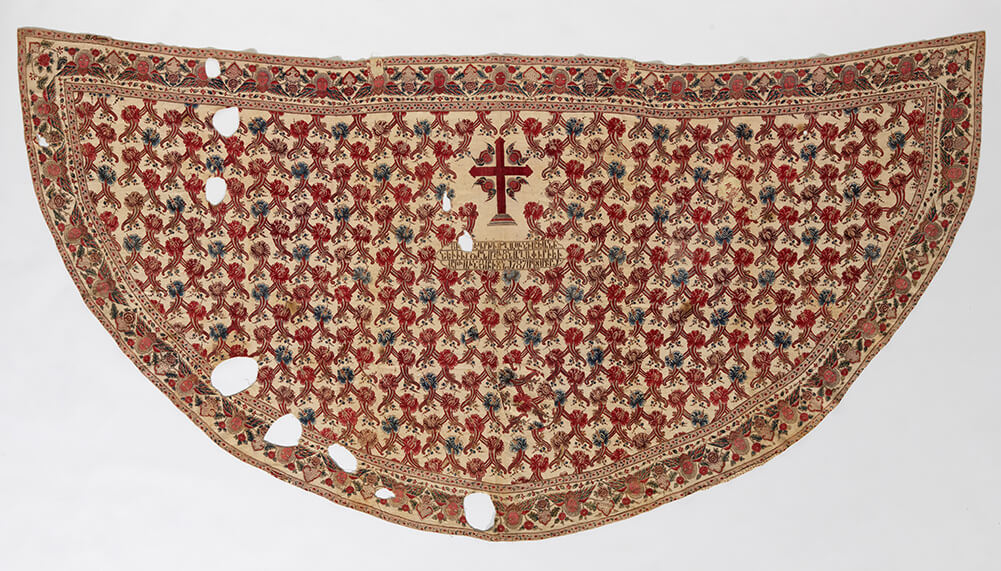
The cope was produced in India for use in the Armenian Church and dedicated to the memory of a couple and their son. An inscription bearing their names and the date appears below a large cross at the centre of the design.
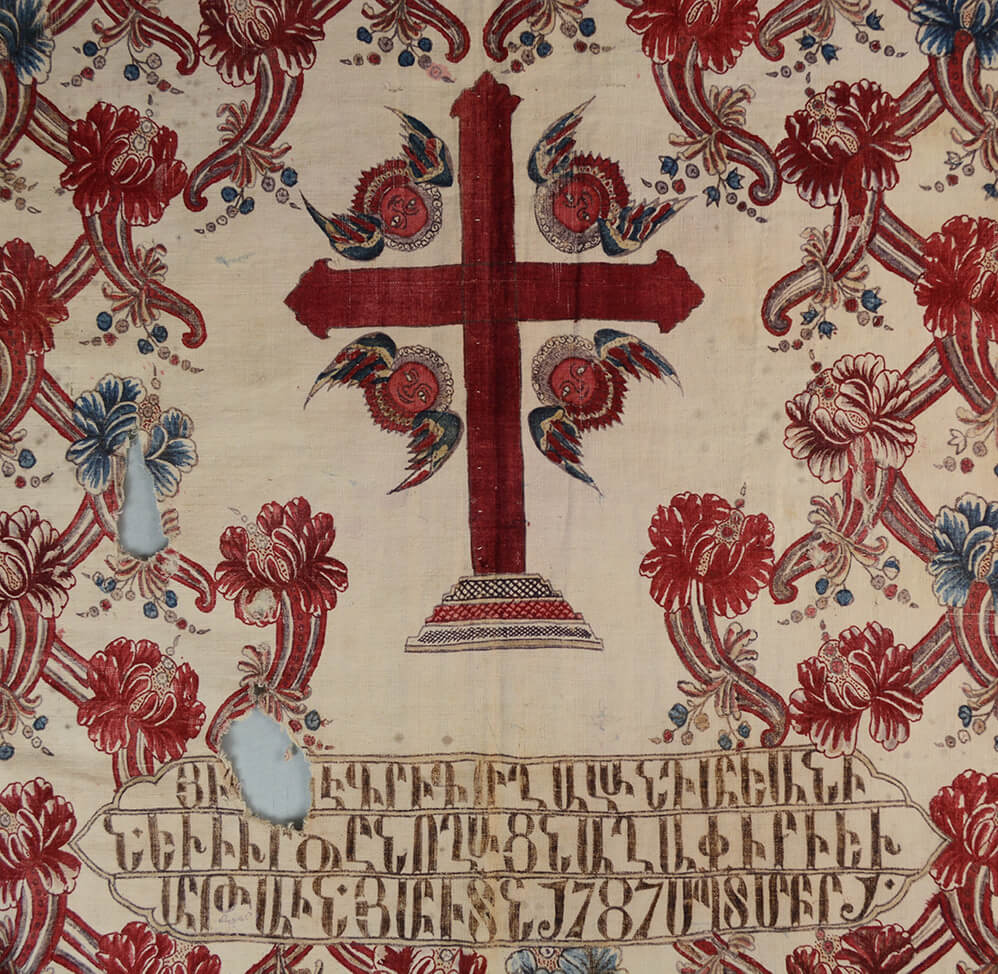
The design is composed of a cornucopia motif which is repeated over the surface of the garment. The placements are reversed on either side of the central cross and inscription creating a mirror image.
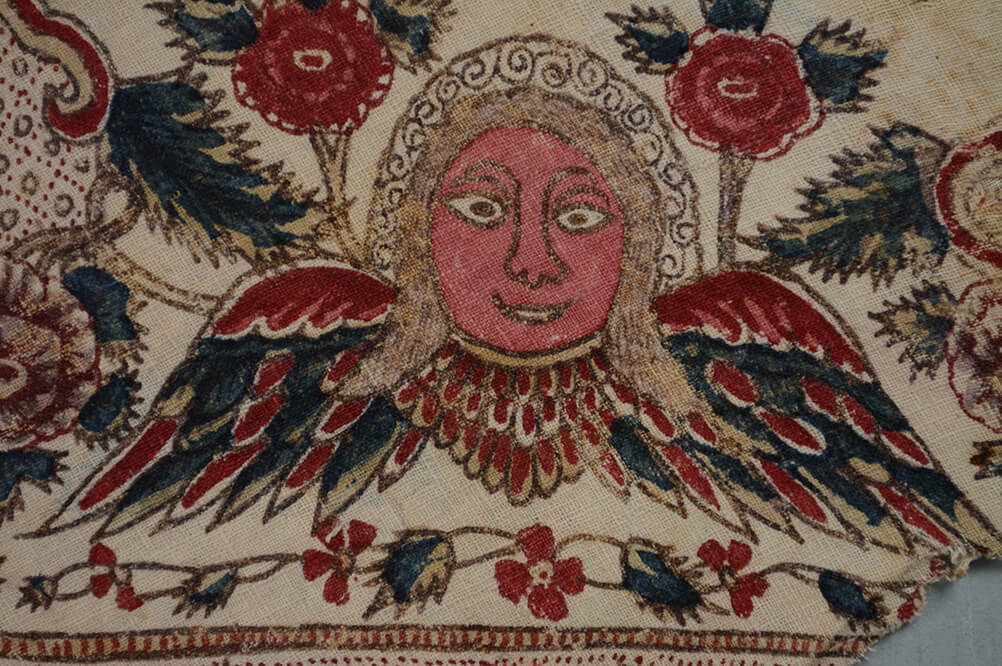
The cope has an outer border of angel heads with wings, each face unique. A visit to the ROM Textile Conservation lab in October of last year, by dye specialist Jagada Rajappa and master block maker Gangadhar Kondra, led to the observation that the cope’s motifs were most probably created by free hand painting, possibly using a stencil to draw out the original design. The lining, however, is printed with a repeating pattern of small concentric circles like a bull’s eye.
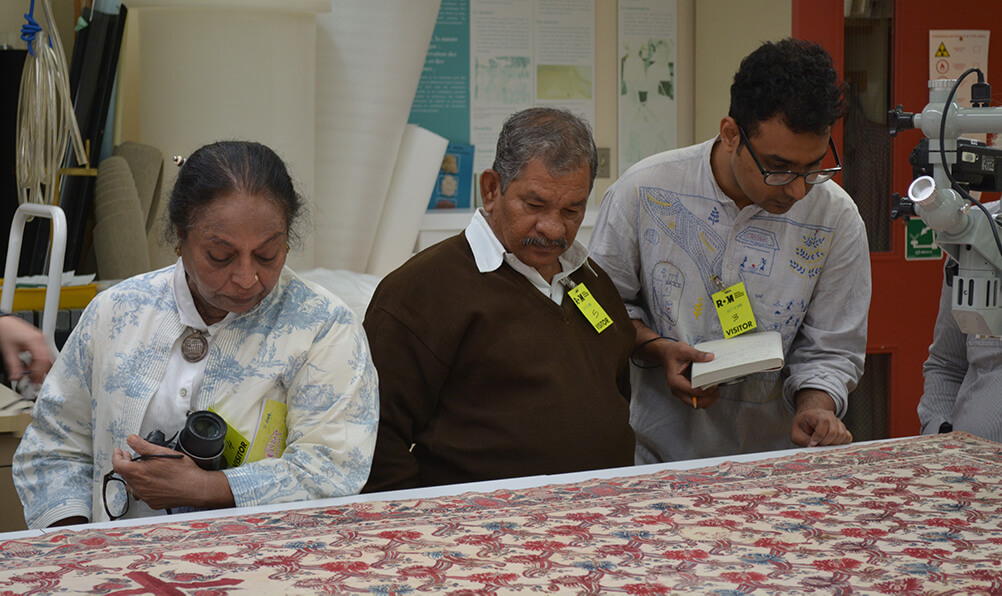
The cope is in particularly good condition apart from a number of puzzling holes, some of which have been previously repaired. In some cases, the areas of loss include both outer fabric and lining, in others the loss is in the outer layer only. In a few additional instances, both the outer layer and lining have been repaired using patches from additional fabric, printed similarly, or using patches with a completely different design.
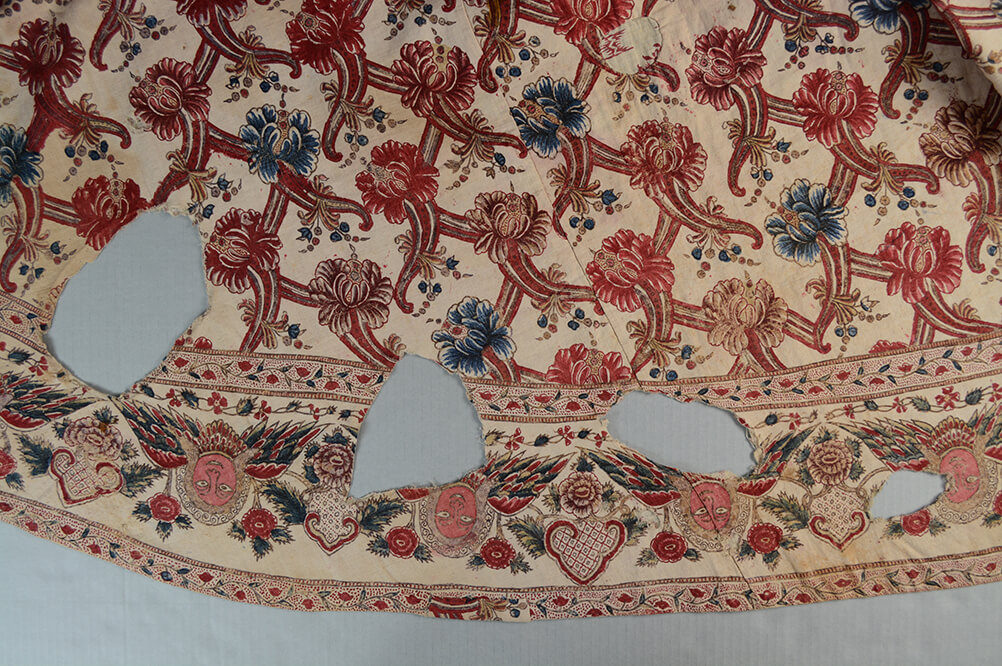
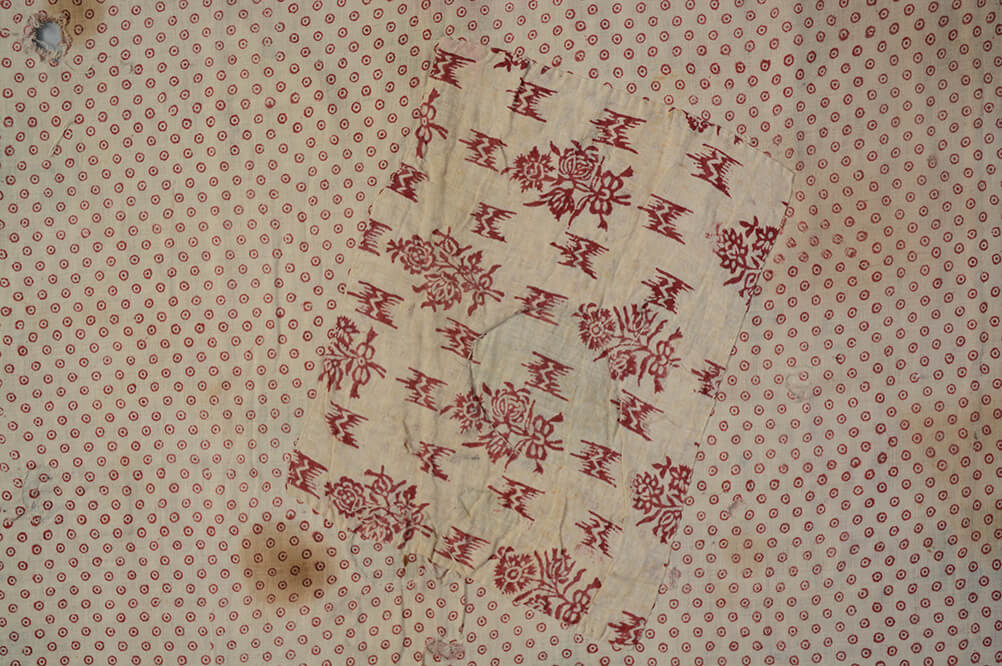
Holes are not uncommon in historic textiles. They may be the result of wear, a chemical interaction between the cloth and a staining agent, or a pest infestation. A greasy stain on an unwashed textile in an unregulated environment may prompt a rodent to chew through the textile producing a “swiss cheese” effect when the textile is unfolded.
In many cases, small areas of staining remaining at the edges of the hole give clues as to the reason for the damage. The edges of many of the larger holes in the ROM’s cope have been cut and turned under in what appears to be preparation for mending. Unfortunately, it is impossible to tell at what point in the history of the cope the damage occurred.
It is the general aim of conservation treatments to stabilize the condition of an object and protect it from further deterioration. Our treatment of the ROM cope is no different. To ensure that the holes do not enlarge, or the edges fray further, they will be supported by fabric patches stitched in place using fine silk thread.
The patches also perform an aesthetic function in that they help the eye to pass over the areas of loss rather than focusing on them. Often patches are prepared from a similar or lighter weight of cloth and custom dyed to match the object. In this case, the holes in the patterned surface of the cope would not be significantly camouflaged by the insertion of a solid colour patch and so we began to investigate methods of reproducing the surface design.
Digital textile printing has grown in popularity within the fashion industry in recent years and is increasingly being employed by textile conservators to create fabric patches for custom repairs as well as yardage for reproduction garments.
Research by members of the wider textile conservation community, examining the suitability of digital textile printing for museum objects, has guided us in the selection of a suitable digital printing process.ii An important consideration is the wash-fastness of the printing inks to ensure that they would not run in the presence of moisture.
Large scale ink jet printers, which can print on specially prepared fabric, work from image files which are created using digital design software and uploaded to a printing company’s website.
Starting from high resolution photographs taken by ROM photographer Brian Boyle, a detail of the surface of the cope is chosen and then the image is manipulated so that the scale of the image is in a 1:1 ratio with the original object.
Once the correct scale is achieved, the image must be colour matched to ensure that the colours we see on our computer screen match what the operator sees at the printing factory, and, most importantly, match the colours in the original textile. A suitable fabric on which the image will be printed is selected from swatches provided by the printing company.
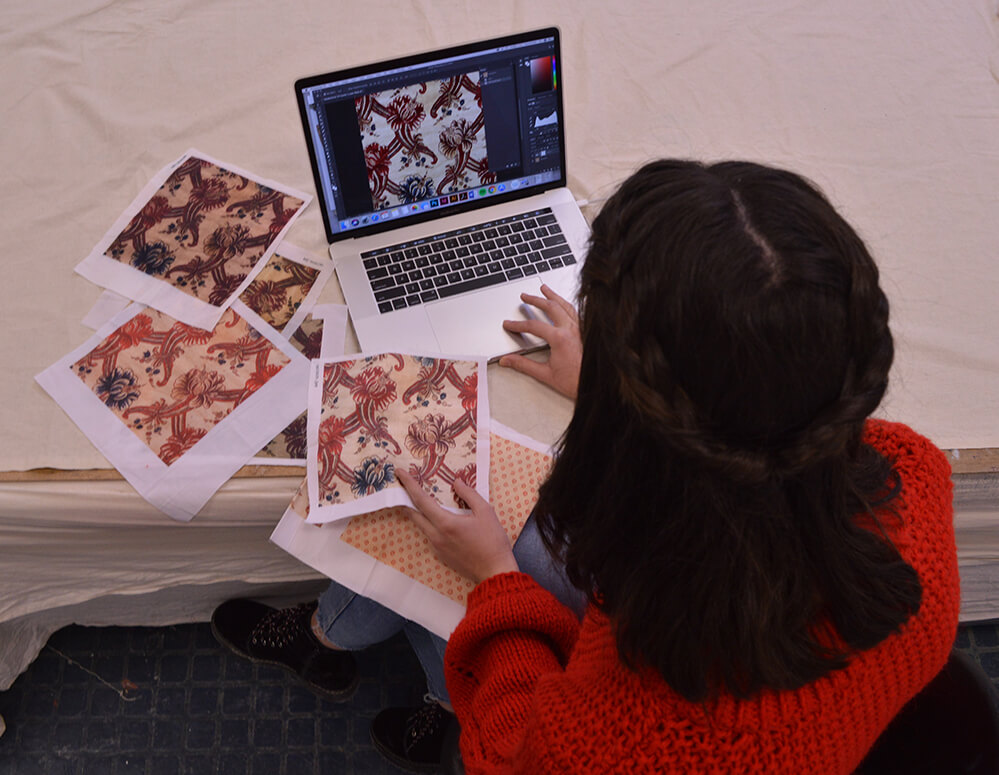
Because the motifs on the cope are repeated many times, the goal is to print an image selected from an undamaged area of the cope and use it to create a repair patch for a damaged area.
To facilitate the creation of the repair patches we are fortunate to be working with Lara Morrison. Lara is in the final semester of a Bachelor of Craft and Design degree at Sheridan College. She is a Textile major with considerable experience in digital textile printing.
Lara has been working to create the image files needed to produce the repair patches as well as liaising with the textile printing company, Emerson Group, in Mississauga,to product the fabric samples.
It will be some weeks before repairs to the cope are completed. We are quite excited by the preliminary results and look forward to sharing the completed treatment with you.
Anne Marie Guchardi
Textile Conservator
Textile Conservation Department, ROM
